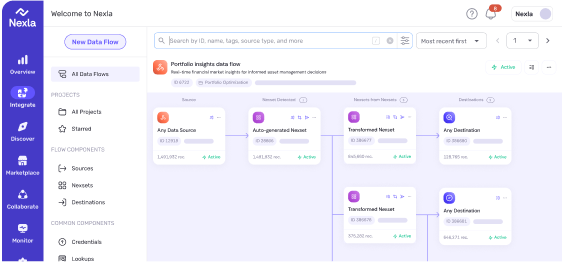
BigPanda on Production-Ready AI Agents
In this third episode of DatAInnovators & Builders, BigPanda’s Alexander Page shares how his team designs AI agents that internalize corrections, evaluate tool use, and scale reliably in production.

Welcome to the Nexla blog! We’re happy to debut our new blog and logo just in time for the AT&T Developer Summit and CES. We want to make it easier for companies to be able to collaborate with data, and for data engineers to do their jobs faster and with ease. We aim to simplify the complexity of data operations in the machine learning age. We wanted our logo to reflect this commitment to simplicity.
 We wanted our new logo to feel fresh, friendly, and human. We chose a clean and clear sans serif font for our company name so that it’s human-readable. Our mark represents data streams crossing, turning corners, in an elongated “N” formation.
We wanted our new logo to feel fresh, friendly, and human. We chose a clean and clear sans serif font for our company name so that it’s human-readable. Our mark represents data streams crossing, turning corners, in an elongated “N” formation.
We chose the colors blue and orange for our mark because they’re the most intense and something of a hallmark of modernity. They’re also the most complimentary- they bring out new qualities in each other. We believe the same thing happens when you enrich data from different sources. Some theorists believe the color blue represents trust while orange represents friendliness. At Nexla, we seek to be your trusted partner in data operations automation in an accessible, friendly way. For these reasons, orange and blue was the natural choice.
On the Nexla blog, we’ll be writing on all things data operations in the machine learning age. To keep up to date, enter your email to receive an update with every post.

In this third episode of DatAInnovators & Builders, BigPanda’s Alexander Page shares how his team designs AI agents that internalize corrections, evaluate tool use, and scale reliably in production.

While it is true that AI offers enormous opportunities for innovation and success, its reliance on personal data raises urgent concerns about privacy, ethics, and governance

In this second episode of DatAInnovators & Builders, Ashish Thusoo breaks down how CurieTech AI uses benchmarks-first discipline and AI-driven build loops to achieve 70–80% productivity gains.
